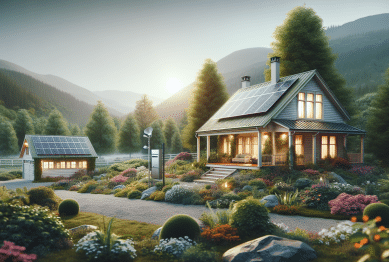Gardening is no longer solely the domain of dedicated hobbyists with hours to spare. Today, planning a home garden with minimal effort has become a growing trend among busy homeowners, urban dwellers, and anyone seeking a sustainable, low-maintenance green space. With evolving gardening tools, plant varieties, and innovative layouts, creating a productive and visually appealing garden is achievable without overwhelming time commitments. This article explores practical strategies, current trends, and expert advice to help you cultivate a thriving garden efficiently.

Why Minimal-Effort Gardening Is Gaining Popularity
Modern lifestyles demand balance, and for many, dedicating long hours to gardening is not feasible. As a result, minimal-effort gardening has emerged as a hot trend in the horticulture world. This approach focuses on reducing labor and optimizing outcomes through smart plant selection, design efficiency, and technological solutions.
According to the National Gardening Association, interest in low-maintenance gardening has surged, especially among urban residents who seek functional greenery with minimal upkeep (National Gardening Association, 2024). This trend aligns with the broader movement toward sustainable living, as gardeners aim to reduce water usage, chemical inputs, and unnecessary work while maintaining vibrant outdoor spaces.
Key Principles for Planning a Home Garden With Minimal Effort
When planning a home garden with minimal effort, several principles can guide decision-making. These strategies combine design intelligence with practical horticultural knowledge to reduce ongoing maintenance.
1. Prioritize Low-Maintenance Plants
Selecting the right plants is the foundation of minimal-effort gardening. Hardy perennials, drought-tolerant species, and native plants require less water, fertilizer, and pruning.
- Perennials: Plants such as hostas, lavender, and coneflowers return year after year with minimal care.
- Drought-tolerant plants: Succulents, ornamental grasses, and Mediterranean herbs thrive with less frequent watering.
- Native species: Local plants are naturally adapted to the climate and soil conditions, reducing maintenance and supporting local biodiversity (Royal Horticultural Society, 2024).
2. Use Efficient Garden Layouts
Smart garden layouts can significantly reduce effort. Raised beds, container gardens, and vertical gardens are particularly effective for small spaces and time-saving benefits.
- Raised beds: Simplify soil management, improve drainage, and reduce weeding.
- Container gardening: Ideal for patios or balconies, containers allow for easy movement and concentrated care.
- Vertical gardening: Utilizing trellises or wall-mounted planters saves space and keeps plants organized for easier maintenance (American Horticultural Society, 2023).
3. Implement Mulching and Soil Improvement Techniques
Mulching and soil enrichment reduce the need for frequent watering and weed removal. Organic mulches like straw, wood chips, or compost improve soil structure and retain moisture.
- Water conservation: Mulch acts as a natural barrier against evaporation, reducing irrigation needs.
- Weed control: A thick mulch layer minimizes weed growth, lowering maintenance time.
- Soil health: Organic mulches decompose over time, enriching the soil naturally.
4. Incorporate Smart Irrigation Systems
Modern technology allows gardeners to automate watering, saving time and ensuring plant health. Smart irrigation systems, drip lines, and timers enable efficient water distribution.
- Drip irrigation: Delivers water directly to plant roots, reducing waste.
- Automated timers: Schedule watering sessions based on weather conditions or soil moisture.
- Rain sensors: Prevent overwatering during rainy periods.
5. Focus on Seasonal Planning and Crop Rotation
Minimal-effort gardening benefits from thoughtful seasonal planning. Planting crops that mature quickly, are resistant to pests, or can self-seed reduces labor across the year.
- Succession planting: Stagger planting schedules to maintain continuous growth without intense workload peaks.
- Crop rotation: Prevents soil depletion and reduces disease incidence.
- Seasonal selection: Choose plants suited to each season to minimize care and enhance yield (University of California Agriculture and Natural Resources, 2023).
Emerging Trends in Minimal-Effort Home Gardening
Several current trends highlight the evolving ways people approach low-maintenance gardening.
1. Smart Gardening Technology
From app-controlled watering systems to AI-powered plant health monitoring, technology is revolutionizing gardening. Devices can alert gardeners to watering needs, pest infestations, or nutrient deficiencies, streamlining care while increasing productivity.
2. Permaculture Principles
Permaculture emphasizes designing gardens that mimic natural ecosystems. This method encourages planting complementary species, reducing maintenance, and creating sustainable gardens that largely take care of themselves.
3. Edible Landscaping
Incorporating vegetables, herbs, and fruit-bearing plants into garden design allows homeowners to grow food while maintaining aesthetic appeal. Companion planting strategies reduce pest pressure, and perennial vegetables like asparagus or rhubarb offer long-term yields with minimal work.
4. Sustainable Water Management
With climate concerns and water restrictions increasing, minimal-effort gardening is integrating water-smart solutions such as rain gardens, permeable surfaces, and water-harvesting systems to reduce reliance on external water sources.
5. Indoor-Outdoor Hybrid Gardens
Urban dwellers are creating hybrid gardens where indoor plants complement small outdoor spaces. This approach uses container systems, hydroponics, and vertical gardens to maximize greenery with minimal physical effort.
Practical Steps to Get Started
- Assess your space: Determine available sunlight, soil type, and garden size.
- Choose low-maintenance plants: Focus on drought-tolerant, perennial, or native varieties.
- Design efficient layouts: Incorporate raised beds, containers, or vertical structures.
- Invest in smart tools: Install automated irrigation, soil sensors, or timers.
- Plan for sustainability: Use mulch, compost, and water-saving techniques.
- Monitor and adjust: Regularly check plant health and adjust care routines as needed.
Conclusion
Planning a home garden with minimal effort is both achievable and increasingly popular. By prioritizing low-maintenance plants, efficient layouts, smart irrigation, and sustainable practices, gardeners can enjoy thriving, productive spaces without extensive labor. Emerging trends such as smart technology, permaculture, and edible landscaping further support the movement toward practical, low-effort gardening. For modern homeowners, these strategies not only save time and resources but also promote environmental sustainability and personal well-being.
By embracing these methods, anyone can create a functional and beautiful home garden that supports healthy living, adds aesthetic value, and requires minimal maintenance, making gardening accessible even to the busiest lifestyles.
References
- National Gardening Association. (2024). Gardening Trends and Insights. https://garden.org
- Royal Horticultural Society. (2024). Choosing Low-Maintenance Plants. https://www.rhs.org.uk
- American Horticultural Society. (2023). Container Gardening and Vertical Gardens. https://www.ahsgardening.org









